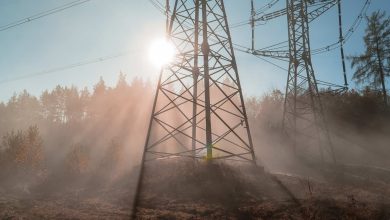Getting it Right: How to Size a Solar System for Your Needs

It’s estimated that by 2050 nearly 20% of electricity in the United States will be generated by solar power. Considering the many environmental and cost-saving benefits that come with solar this shouldn’t come as a surprise.
However, many homeowners are still intimidated to leap into this form of clean power. One common complaint is not knowing what size solar system to go with.
The good news is that calculating how to size a solar system is fairly straightforward. In this guide, we’ll be going over the formula you need to use to get a good estimate. That way, you can get the perfect solar system for your specific home.
Table of Contents
Determine How Much Electricity You Use
In some cases, you might just want a solar system to offset some of your energy bills. However, if you’re like most homeowners you likely want to completely replace your traditional electric use with solar energy.
In these cases, you’re going to want to find out how much energy consumption you go through each month. Keep in mind that power consumption can vary from month to month.
You likely use your heating and cooling systems more in the winter and summer, so your bills will be higher during these months. As such we recommend gathering your power bills from the last year.
Look for the total amount of electricity you use each month. This will be in the form of kilowatt-hours. Add all of these numbers together over the last year.
Then, divide the figure by twelve. This will give you a rough estimate of how much electricity you need for your solar panel system to produce for you every month.
Find Out How Much Sunlight Your Home Gets
As you can guess, solar systems need a lot of sunlight to operate at total efficiency. In the solar world, sunlight availability in an area is measured by the amount of peak daylight hours over a month.
Different parts of the country get different amounts of peak daylight hours. For example, sunny states like California, Arizona, and Nevada can easily get over two hundred peak daylight hours per month.
Similarly, more cloudy or snowy states like Maine, Washington, and New York often barely break one hundred hours of peak daylight.
No need to count the hours of the day to find the peak daylight hours. Simply look up the estimates where you live.
Calculate the Size of Your System
Once you have these two bits of information, you can easily calculate the size of your system using a simple formula. Take the monthly amount of electricity that your home uses.
Then, divide that by the monthly peak sun hours in your area. This solution will give you the size your system needs to be in terms of kilowatt-hours. For example, let’s say your home uses around one thousand kilowatt-hours of electricity each month.
You live in Nevada which has two hundred-twenty peak daylight hours per month. By dividing one thousand by two hundred-twenty you would need a 4.5 kilowatt-hours system.
Factors That Determine How Many Solar Panels You Need
We mentioned two of the most important factors for determining how big your solar system needs to be: electricity consumption and peak sunlight hours in your area.
However, there are other factors you need to consider when deciding on the specific amount of solar panels to get. First, you need to look at the panel output level.
The output on most solar panels falls around the 400-watt range. However, some small models can only go up to two hundred fifty.
Similarly, there are more powerful ones that can go higher. The higher the output level the fewer solar panels you’ll need.
The direction of your roof is also important. If your solar panels can face southward you’ll be able to have fewer of them. They can face north, but you’ll need more to get the same power output levels.
The size of your roof is another factor. If you have a small or dynamic roof, it might be hard to fit more than a few solar panels on it. In these cases, you’ll need to make sure to invest in high-efficiency solar panels that are more expensive.
Alternatively, you can set up your solar panels on the ground if you have a big enough property. The last factor is your budget. There are indeed a variety of tax incentives that come with solar systems.
However, even with these the cost of a new system is still going to be quite an investment. If you don’t have savings it might be hard to afford this. So you might need to get fewer solar panels simply from a cost perspective.
Consult With an Expert
It’s important to keep in mind that the formula to get the size of your solar system is just an estimate. As such, you’re going to want to get a professional to confirm it.
Look for residential solar panel experts who have experience with sizing up homes for systems. Reviews can be a good way to find qualified professionals.
Make sure that people who got their solar systems are happy with the results. Show the solar provider the math behind how you got your solar system size. From there they can adjust it based on their inspection.
Experts are also helpful because they help you decide what solar panels work best for your power needs and home size.
If you have a smaller home, they might recommend a solar system design with a better power rating to maximize every square foot of space.
Appreciate Learning How to Size a Solar System? Keep Exploring
We hope this guide helped you learn how to size a solar system. Most of the time if you’re calculating on your own, the solar panel sizing you come up with will likely be an estimate.
That’s why we recommend checking it with a professional to get a second opinion. They can help you decide whether or not you might need a smaller or larger system.
Want more solar content? We have plenty of similar topics that you can find by exploring today.




